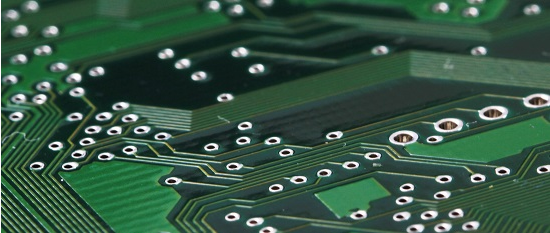1. Daily maintenance and maintenance, daily maintenance of working SMT patches, and record the maintenance results in the SMT daily inspection table.
1. Suction nozzle: Check whether the suction nozzle is worn or damaged, whether it is stuck or blocked by solder paste, and replace or clean if necessary.
2. Shrapnel: Check whether the shrapnel is fatigued (the elasticity does not move), and replace it if necessary.
3. Feeding platform: Check whether there are any pieces and leftovers on the feeding platform.
4. Compound vision lens: Check whether the lens has dirt or parts falling on the lens, and clean it if necessary.
2. Weekly maintenance and maintenance, weekly maintenance of the working placement machine, and record the maintenance results in the weekly maintenance table of the SMT placement machine.

1. Suction nozzle clamp: check the buffer action, if the action is not smooth, apply a thin layer of lubricant, if the clamp is loose, tighten it.
2. Moving the lens: Clean the dust and residue from the lens.
3. X-axis screw: Check if there is debris or residue on the screw, it must be cleaned.
4. X-axis guide rail: Check whether the grease is hardened and there is no sticking of residue.
5. Y-axis screw: Check if there is debris or residue on the screw, it must be cleaned.
6. Y-axis guide rail: Check whether the grease is hardened and no residue adheres.
7. Z-axis screw: Check if there is debris or residue on the screw, it must be cleaned.
8. Z-axis guide rail: Check whether the grease is hardened and there is no residue adhesion.
9. W-axis screw: Check if there is debris or residue on the screw, it must be cleaned.
10. Air interface: Check that the Y-shaped sealing ring and O-ring are not aging, and replace if necessary.
The basic operation steps of the placement machine
1. Turn on the main switch to supply power to the SMT machine.
2. Turn on the SMT power supply.
1. Turn on the power switch on the switch panel at the bottom left of the front of the machine, and the machine will perform self-checking.
2. After the self-check is OK, after the main order is displayed, turn on the EMERGXENCY STOP button on the YPU, press the READY button, the EMERGXENCY STOP message disappears, and each axis is under servo control.
3. Back to the origin.
1. Select I/IRUNING. (Select in the menu)
2. Use the keyboard arrow control keys to select the name of the PCB to be produced, and press ENTER (select in the keyboard)
3. Select and execute [I/I/D2INIT SERVO ORIGIN] each axis starts to return to the origin (select with handle operation)
Note: Return to origin can also be performed in manual mode, except for 4/SHELL/M, each item has manual mode.
4. Warm up the machine.
1. Check the host: the abnormal stop is released, the thimble will not move, the return to the origin is completed, the push rod is locked, and all safety covers are closed. Check the feeder: the feeder is properly installed and the tray does not protrude from the bracket.
2. Choose to execute I/I/D 2 WARM UP
3. Press the ENTER key to start the operation. Under normal circumstances, it will be executed for 5-10 minutes, and it will stop automatically.
4. Press ESC to complete the warm-up operation.
Caution: An abnormality occurs during warm-up, stop operation immediately, check the cause of the problem and solve it.
Note: Warm-up can also be performed in manual mode, except for 4/SHELL/M, each item can be performed manually.
5. PCB production begins:
1. The operator loads the materials according to the "SMT Station Material List" of each model.
2. Choose I/I/RUNNING
3. Press RUN button on YPU or execute selection I/IA2 AURO EUNNI-NG machine to start operation.
6. Elimination of obstacles.
When an obstacle is encountered in production, the red indicator light will be on and an alarm will sound. When removing the obstacle, press the red emergency stop button at the top left of the machine. After the processing is completed, unscrew the emergency stop button and press [REPDY] to resume production.
Caution: It is very dangerous for any part of the operator's body to enter the moving range of the machine during operation. Make sure to stay away from the moving range of the machine.
Seven, PCB production is completed
1YPU can stop the machine operation at any time by pressing the STOP button or selecting and executing I/IAIATUP RUNNING.
2. Press the ERSET key or execute 1/1/E2/RESET RUNNING to turn the machine back to the PCB production preparation stage.
8. Completion inspection:
1. Check and make sure that the nozzle is not chipped or damaged, and there is no solder paste or residue sticking.
2. Check the fatigue of the deformation of the shrapnel clamped by the suction nozzle.
3. Check the laser components, there is no dust or dirt on the window of the compound vision lens and the independent vision lens.
4. Check that there is no debris or components on the lens.
5. Check that there is no debris or other debris on the feeding platform.
6. Check whether there is PCB around the conveyor track and on the conveyor belt.
7. Exit the current displays: press ESC and ENTER, select O/EXIT, and display a warning message on the screen before turning off the power; press the abnormal stop button to stop.
8. Press the abnormal stop button to stop abnormally.
9. Press any key to clear the use right screen and disappear.
10. Turn off the PCB power supply. Note: Sudden power failure will cause PCB hard disk data loss.